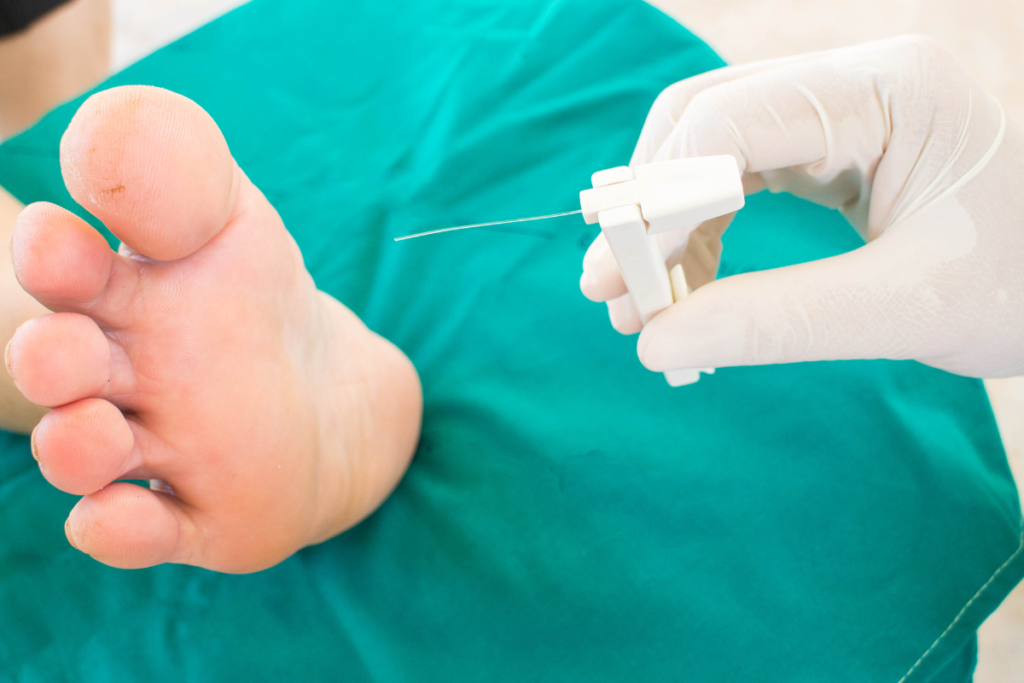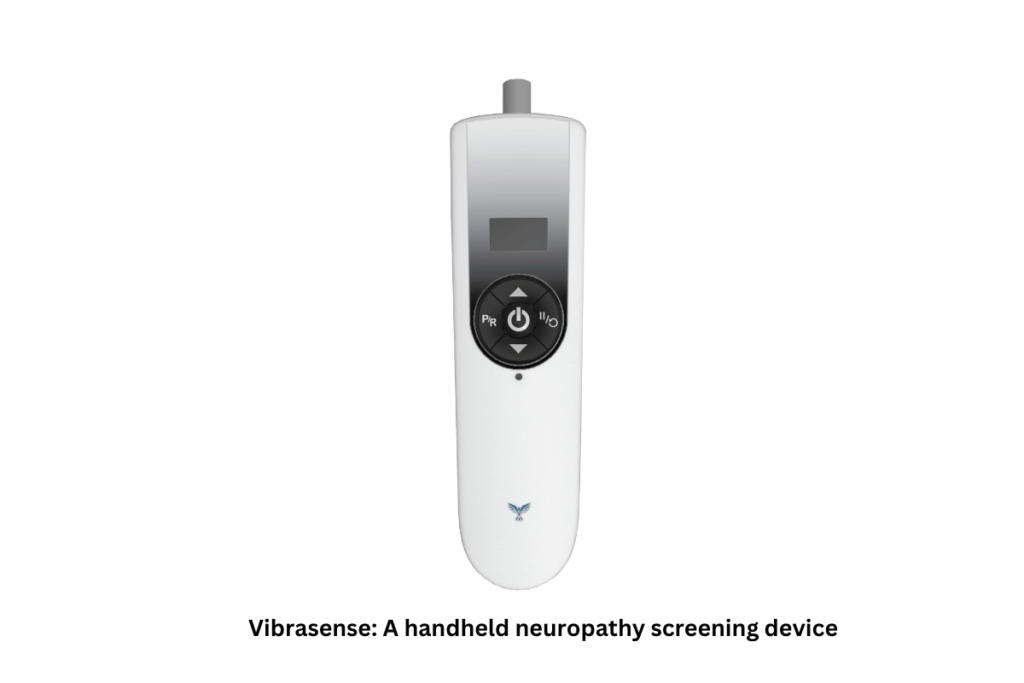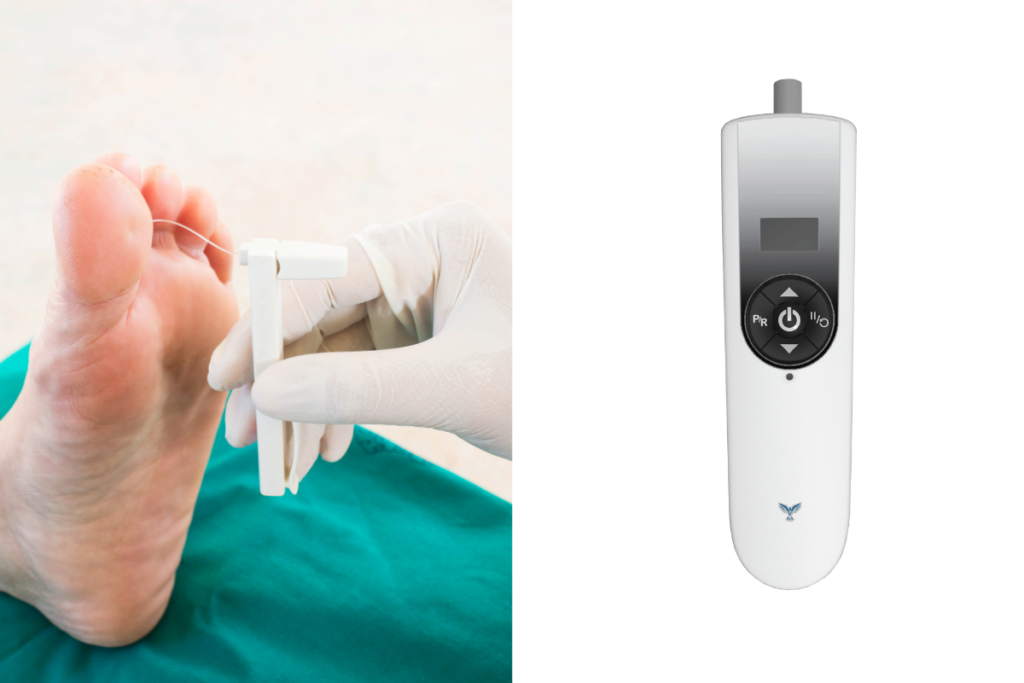Early detection of diabetic neuropathy is critical to preventing its complications. There are different types of tools used for diabetic neuropathy testing, but two of the most commonly used ones are the monofilament and biothesiometer. In this article, we will examine the differences between these two tools and which one is better for diabetic neuropathy testing.
Monofilament Test
The monofilament test is a simple and inexpensive tool used to detect diabetic neuropathy. It uses a thin nylon filament that is pressed against the foot to test the patient’s ability to feel the filament. If the patient cannot feel the filament, it indicates that the patient may have diabetic neuropathy.

Biothesiometer Test
The biothesiometer is a device that measures the sensitivity of the nerves in the foot. It uses a vibrating probe that is placed on the foot to stimulate the nerve endings. The biothesiometer measures the level of vibration that an individual is able to detect. If an individual can only detect higher intensity vibrations or cannot sense any vibration stimuli, it may indicate the presence of diabetic neuropathy.

Which test is better?
The choice between the biothesiometer and the monofilament test depends on several factors. Let us examine a few of those:
1. Qualitative vs Quantitative testing
Monofilament can be described as a qualitative testing tool because it gives a binary response (yes or no) to the question of whether a patient can feel pressure or not.
Biothesiometer, on the other hand, is a quantitative testing tool because it provides numerical measurements of a patient’s vibratory perception threshold.
2. Sensitivity in detecting neuropathy
When it comes to detecting neuropathy, a biothesiometer is a more sensitive tool compared to the commonly used 10-gram monofilament test. This is because the biothesiometer tests a wider range of vibrational intensities, allowing it to detect early loss of vibration sensations.
In contrast, the 10-gram monofilament test only picks up on loss of sensation at a slightly advanced stage.
3. Long-term monitoring
Biothesiometer is a device that measures the level at which an individual perceives a vibration stimulus (known as vibration perception threshold), which is a sensitive indicator of neuropathy. This threshold can be monitored over long periods of time, making it useful for detecting changes in neuropathy over time.
On the other hand, monofilament testing only provides a snapshot of neuropathy at a single point in time and cannot be used for long-term monitoring.
4. Size
The monofilament is a small, flexible strand that can be easily carried. The conventional biothesiometers are more cumbersome and heavy (measuring between 2-5 kilograms) and necessitate a constant supply of electricity.
However, the difficulty of carrying biothesiometers has been simplified by the availability of portable and battery-operated devices, such as Vibrasense, which can be conveniently carried in one’s pocket.
5. Time and Cost
The monofilament test is a simple and inexpensive test that can be performed by any healthcare professional. The test involves eliciting only yes or no responses, which makes it quicker to conduct compared to other tests, and the cost of the filament used for the test is low. It is recommended that a monofilament should be discarded after using it on 70 to 100 subjects.
Biothesiometer on the other hand is more expensive and requires additional training to perform. Paying the additional cost for a biothesiometer can be helpful because it has been shown to detect more cases of neuropathy than monofilament testing. Biothesiometer testing can detect neuropathy in patients who may have normal pressure sensation but abnormal vibration perception, which may be missed by monofilament testing. This early detection of neuropathy can be critical in preventing further nerve damage and managing the condition effectively.
What do the medical guidelines say?
In order to identify the risk of foot ulceration, the International Working Group of the Diabetic Foot ( IWGDF) suggests that patients who show no signs of sensory loss during the monofilament test should undergo screening for vibration perception using a tuning fork or biothesiometer. This advice is based on the fact that reduced sensitivity to vibrations can also be an indication of such risk, which may not be disclosed by the monofilament test in isolation. Therefore, conducting screening for vibration perception is critical to identifying those who are susceptible to foot ulceration, and the IWGDF highlights its importance as a complementary approach to the monofilament test.
Conclusion
The choice between the biothesiometer and the monofilament test should be based on the needs and circumstances of the healthcare practitioners. The monofilament is a useful clinical tool mainly for detecting more advanced neuropathy and identifying patients at increased risk of ulceration and amputation. However, it may not detect diabetic neuropathy as early as the biothesiometer test. The biothesiometer is typically used to detect early signs of peripheral neuropathy. Detecting neuropathy early allows for prompt treatment and management, which can prevent or slow down the progression of the condition, improve quality of life, and reduce the risk of complications.
References
- Pop-Busui R, Boulton AJ, Feldman EL, Bril V, Freeman R, Malik RA, Sosenko JM, Ziegler D. Diabetic Neuropathy: A Position Statement by the American Diabetes Association. Diabetes Care. 2017 Jan;40(1):136-154.
- Nuha A. ElSayed, Grazia Aleppo, Vanita R. Aroda, Raveendhara R. Bannuru, Florence M. Brown, Dennis Bruemmer, Billy S. Collins, Christopher H. Gibbons, John M. Giurini, Marisa E. Hilliard, Diana Isaacs, Eric L. Johnson, Scott Kahan, Kamlesh Khunti, Jose Leon, Sarah K. Lyons, Mary Lou Perry, Priya Prahalad, Richard E. Pratley, Jane Jeffrie Seley, Robert C. Stanton, Jennifer K. Sun, Robert A. Gabbay; on behalf of the American Diabetes Association, 12. Retinopathy, Neuropathy, and Foot Care: Standards of Care in Diabetes— 2023. Diabetes Care 1 January 2023; 46 (Supplement_1): S203–S215.
- Schaper NC, van Netten JJ, Apelqvist J, Bus SA, Hinchliffe RJ, Lipsky BA; IWGDF Editorial Board. Practical Guidelines on the prevention and management of diabetic foot disease (IWGDF 2019 update). Diabetes Metab Res Rev. 2020 Mar;36 Suppl 1:e3266.
- Miranda-Palma B, Sosenko JM, Bowker JH, Mizel MS, Boulton AJ. A comparison of the monofilament with other testing modalities for foot ulcer susceptibility. Diabetes Res Clin Pract. 2005 Oct;70(1):8-12. doi: 10.1016/j.diabres.2005.02.013.
- Pourhamidi K, Dahlin LB, Englund E, Rolandsson O. Evaluation of clinical tools and their diagnostic use in distal symmetric polyneuropathy. Prim Care Diabetes. 2014 Apr;8(1):77- 84.
